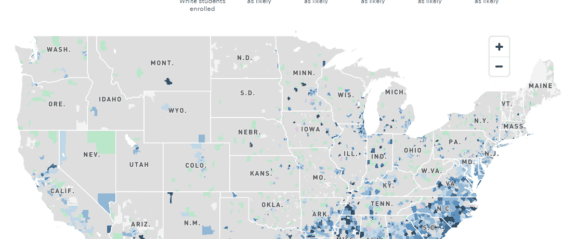Dropping Knowledge
Are the costs of higher education still rising or have they slowed down? How much do students from high-income families pay compared to low-income families? What are the graduation rates of different colleges and universities? It can be hard to answer these questions just by looking at a college or university’s website, but that has changed.
The Hechinger Report teamed up with Dallas Morning News and the Education Writers Association to build a data dashboard that shows all this information and more in an easily digestible format. It’s called the Tuition Tracker and is an impressive collection and representation of data to help both students and families as well as education researchers and policymakers make sense of the true cost of higher education.
Let’s look at the data for UNC-Chapel Hill. According to the Tuition Tracker, the sticker price, or total advertised estimated cost for a full-time undergraduate including books and tuition, was $24,349 for the 2015-16 school year. The chart below shows the net price, or what students actually paid after scholarships and grants, for different income brackets.
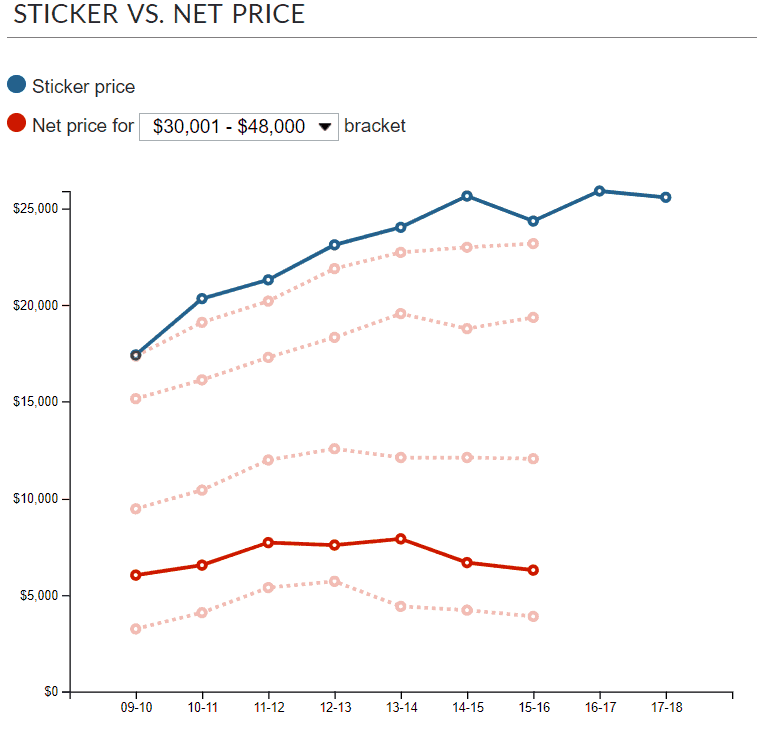
The chart below shows the percentage of students receiving financial aid, including Pell grants and federal loans.
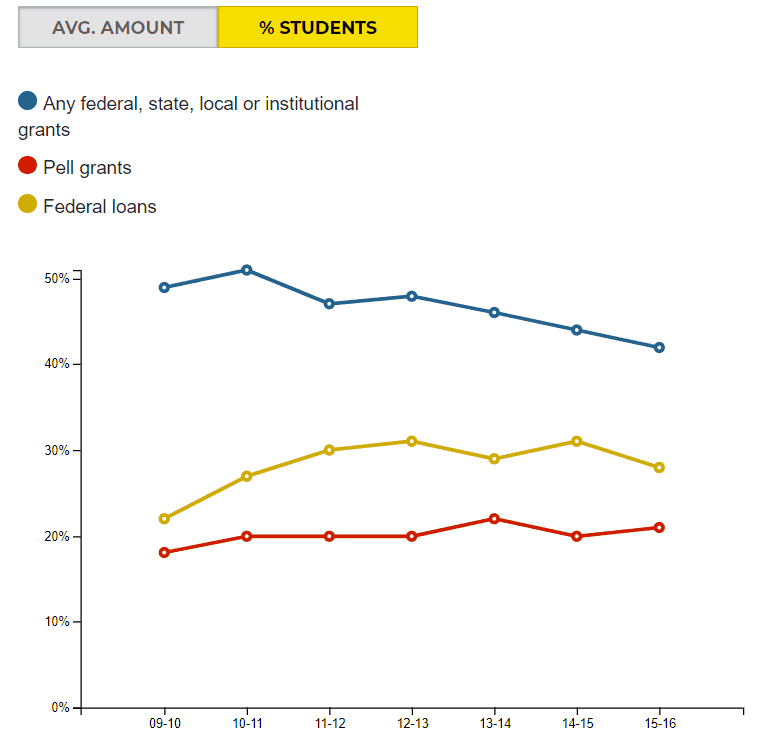
The tracker has data from almost every public and private four-year institution in the state (and country) along with some community colleges although not many.
Contextual Healing
North Carolina Health News released a three-part series this week on the complexities of the opioid crisis and those experiencing chronic pain. The series draws attention to one effect of the opioid crisis — that many doctors have simply stopped prescribing opioids, which some pain patients argue is critical for their pain management. The author, Taylor Knopf, wrote a Twitter thread about her experience researching and writing the series and noted that there were many contradictions, both in the research and in what doctors told her. Ultimately, the series drove home the point that pain management is a highly individual and complex issue that our health care system is not incentivized to deal with.
Read the series here:
- Part 1: Hundreds of N.C. Doctors Say They’ve Stopped Prescribing Opioids
- Part 2: Uncontrolled Pain: The Other Side of the Opioid Crisis
- Part 3: Complex Pain Problems Put Patients in a Bind
For Your Consideration
As we’ve crisscrossed the state visiting all 58 community colleges, we’ve heard many times about the skills gap, or the idea that we do not have enough workers with the skills industries need today and in the future. A new brief from the Urban Institute challenges that notion, looking at what they call the education-jobs “mix-match” in all 387 American metropolitan areas. The authors use data on educational attainment and jobs availability to look at the match between educational attainment and the attainment necessary for available jobs in each area.
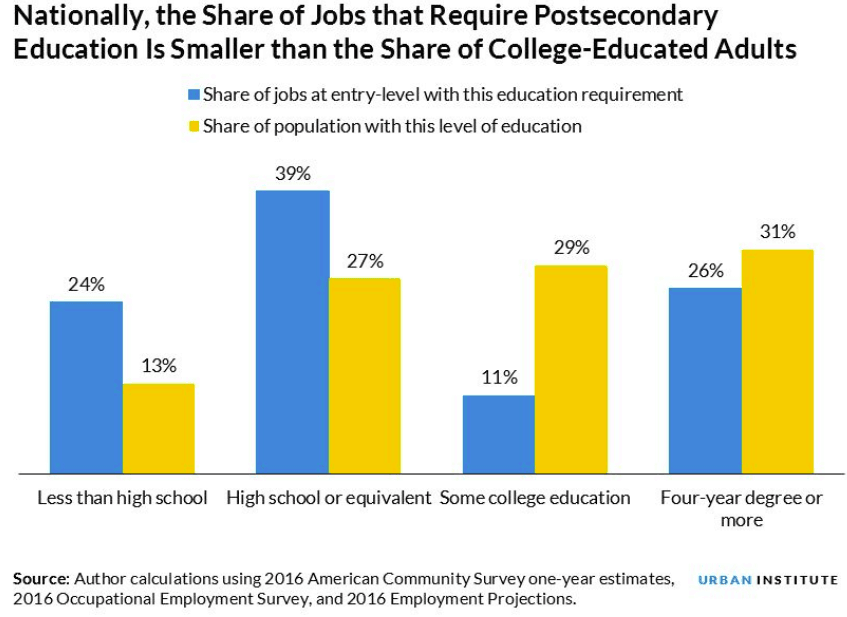
They find that in most metro areas the share of the population with “some college” or a four-year degree is greater than the share of jobs requiring that level of education. The authors point out several limitations of the data and their analysis, but it provides an interesting counterpoint to the skills gap narrative.
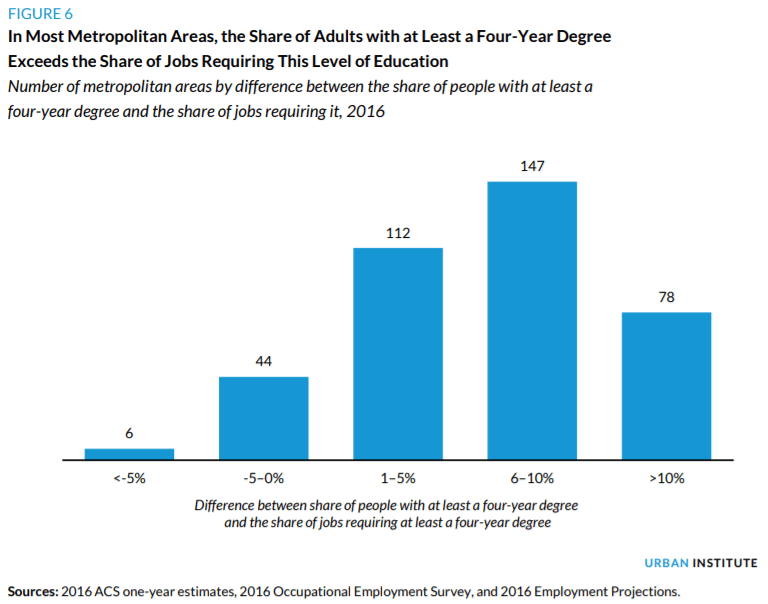
Need to Know
Why did EducationNC visit all 58 community colleges in the space of about two weeks? Learn about the Awake58 blitz in this video and read about our visits, spotlighted in Better News.
What we're reading
Miseducation: Is There Racial Inequality at Your School?
Based on civil rights data released by the U.S. Department of Education, ProPublica has built an interactive database to examine racial disparities in educational opportunities and school discipline.... Read the rest-
Signs of Strong Interest in ‘Opportunity Zones,’ as Investors Await Regulations
-
American democracy is fracturing. Libraries say they know how to help
-
Cities Tell Airbnb to Make Room for Affordable Housing
-
1,495 Americans Describe the Financial Reality of Being Really Sick
-
Wealth Gap Widens Between ‘America’s Dependents’
-
Study shows more Americans support legalized sports gambling


